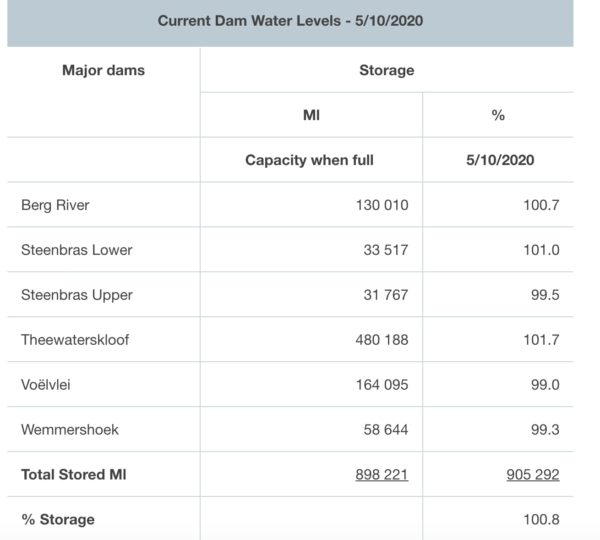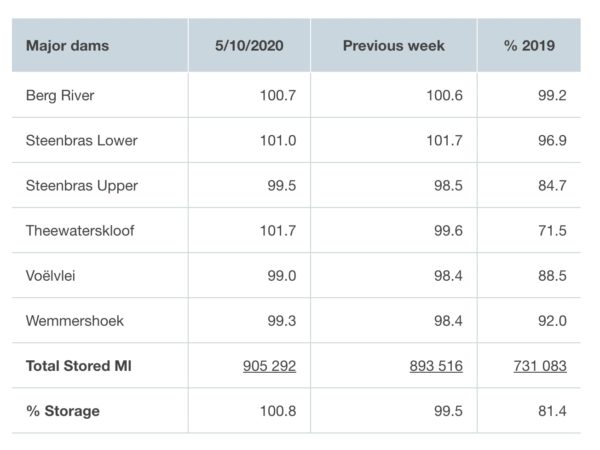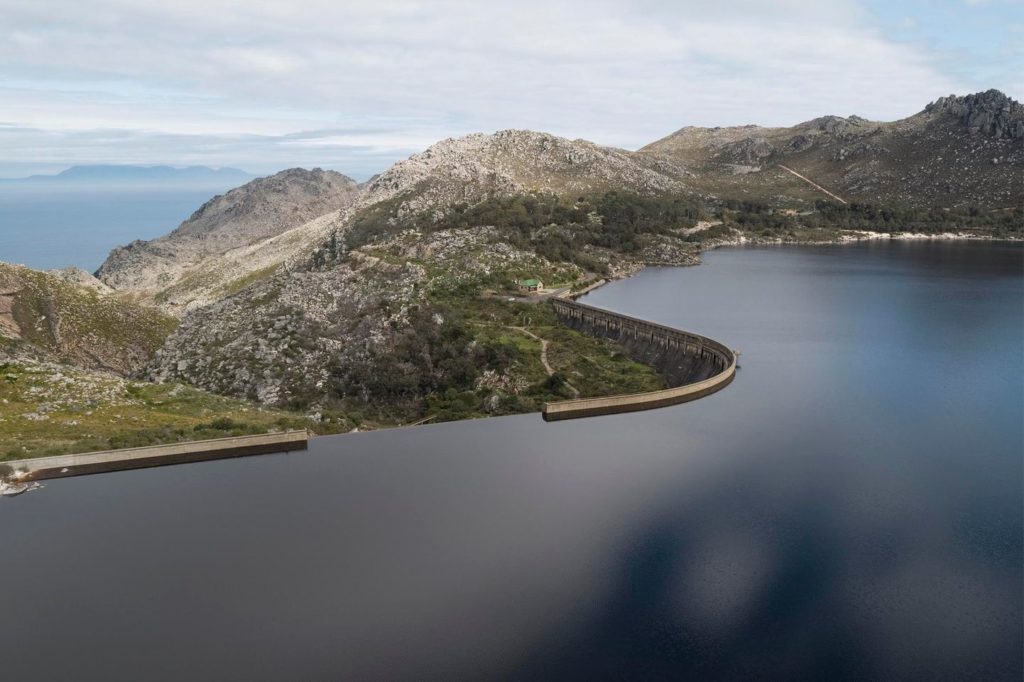The Mother City has come a long way since Day Zero. The dams supplying Cape Town with water are at an historic 100.8%, and are full for the first time since 2014.
The latest dam level reading shows that levels increased by 1.3% to 100.8% in the last week. The fullest dams are Theewaterskloof at 101.7%, Steenbras Lower at 101% and Berg River at 100.7%. The remaining major dams are just under 100%.


This time last year, dams were 81.4% full, in 2018 they were 75.9% full and in 2017, an astounding 37.7% full.
Theewaterskloof, the Western Cape’s largest source of water, is currently overflowing. Three years ago the very same dam was at 12.9% full, and Cape Town was days away from being the first city in the world to run out of potable water.
On October 2, the City announced that the dams have reached 100% capacity, thanks to an intensive whole-of-society effort to protect our available water supply before, during and after the shock of Day Zero.
“It is clear that as a society we have completely changed our relationship with water,” said the City’s Mayoral Committee Member for Water and Waste, Alderman Xanthea Limberg.
“The City’s water saving achievements have been internationally lauded, with the International Water Association naming Cape Town the world’s number 1 water saving city for reducing demand by 55% between 2015 and 2018 without resorting to intermittent supply.”
However, Limberg warns that this exciting milestone does not indicate permanent water security.
“Full dams may give the impression that our troubles are over, but rainfall this year was only just above average. Low consumption has also contributed to the recovery of the dams. Although there is some room to relax, we need to remain vigilant that water consumption remains at a water wise level and proceed diligently with additional water sources including groundwater, reuse and desalination as outlined in the City’s Water Strategy,” she said.
She warns that another drought could strike, and last much longer than the one The Mother City battled over the last few years.
“Climate change studies undertaken by the City indicate that droughts such as the one we have just experienced will occur more often and last longer.”
On the question of easing water tariffs, Limberg adds that appropriate tariffs and restrictions for the 2020/21 hydrological year (which runs from November 1 to October 31) are currently taking place.
“Tariffs are currently on the second lowest level possible in terms of the City’s 2020/21 Budget, and have come down significantly since the peak of the drought. The no restriction, water-wise tariff which is under consideration will provide some relief, but with due cognisance of the importance that sufficient funding is available to continue increasing our resilience.
“Also being taken into consideration is the projected increase of the proportion of residents needing indigent support, in part due to the deteriorated national economic climate.”
Read the dam report here: Dam Levels October 5
Picture: City of Cape Town

